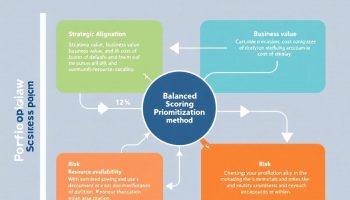
Understanding Implementation Approaches: 8 Strategic Methods for Success
Implementation approaches offer organizations strategic frameworks to deploy new systems, processes, or technologies effectively. The eight distinct methods—parallel, phased, big bang, pilot, agile, lean, incremental, and crash—provide varying levels of risk management, resource utilization, and timeline options that can be customized to fit your specific organizational needs and project requirements.
Business Impact and Strategic Necessity
Your choice of implementation approach directly affects operational continuity, resource allocation, and competitive advantage. Selecting the appropriate strategy helps you minimize disruption, optimize resources, and accelerate value from new initiatives. Implementation approaches can significantly reduce risks while boosting adoption rates—particularly important for enterprise-wide transformations where failure could have major financial consequences. By matching implementation methods to your business context, you’ll balance speed-to-market demands with quality assurance needs, improving project success rates and return on investment.
The right implementation approach serves as a roadmap for your organization’s transformation journey. Each method offers unique advantages depending on your project scope, timeline constraints, and risk tolerance. Implementation approaches should align with your company’s culture, available resources, and technical complexity of the project at hand.
Careful selection of implementation approaches enables you to plan resource allocation more accurately, set realistic timelines, and create appropriate contingency plans. Your project success often hinges on this initial strategic decision, making it a critical consideration in your planning process.
8 Implementation Approaches: Choose the Right Strategy for Successful System Transitions
In the dynamic landscape of organizational change, selecting the right implementation approach is crucial for ensuring a smooth transition to new systems or processes. This section outlines eight distinct implementation approaches, each designed to cater to varying business needs and project complexities. From the structured stages of phased implementation to the rapid deployment of crash implementation, these methods offer flexible options that can be tailored to your organization’s objectives.
Understanding the advantages and challenges associated with each approach will empower you to make informed decisions that optimize resources and minimize risk. Whether you are adopting new technologies or refining existing ones, these strategies provide a roadmap to achieving successful implementation workflows. Dive into this comprehensive overview to discover which approach aligns best with your operational goals.
1. Parallel Implementation Approach
When choosing between various implementation approaches, parallel implementation stands out as a method where you operate both new and old systems simultaneously during the transition period. This implementation approach provides a safety net while introducing new processes or technologies into your organization.
The primary benefits of parallel implementation include:
- Minimal business disruption as operations continue uninterrupted
- Built-in backup system if issues arise with the new implementation
- Opportunity for direct comparison between systems
- Reduced risk of data loss or service interruptions
However, parallel implementation demands significant resources. You’ll need additional staff to manage both systems and may face higher costs due to duplicate infrastructure. This approach works best for large-scale critical system transitions where failure isn’t an option, such as healthcare, financial, or enterprise-wide implementations.
To succeed with this approach, ensure you have clear success metrics to determine when the old system can be decommissioned. Monitor both systems carefully and plan for a definitive cutover date to avoid indefinite parallel operation.
2. Phased Implementation: Structured Deployment Stages
Phased implementation approaches offer a methodical way to introduce new systems or processes by breaking deployment into distinct, manageable stages. When planning your implementation strategy, this approach allows you to roll out components sequentially across departments, regions, or user groups.
The primary benefits of phased implementation include:
- Reduced risk through smaller, more controllable deployment units
- Better resource allocation across the implementation timeline
- Opportunity to learn and adapt between phases
- Easier troubleshooting as issues can be isolated to specific phases
However, this method isn’t without challenges. The extended timeline can sometimes lead to implementation roadblocks between phases. Coordination becomes more complex when managing multiple stages simultaneously, especially when dependencies exist between them.
Phased implementation works particularly well for multi-department projects or geographical rollouts where you need time to adapt to regional differences. Organizations undergoing extensive digital transformations often prefer this approach to maintain operational stability while progressively introducing changes across the business ecosystem.
Expert Insight: Utilizing a phased implementation strategy enables you to manage risk effectively by introducing changes in manageable stages. This approach enhances resource allocation, allows for continuous learning, and simplifies troubleshooting. However, be aware of potential roadblocks and complexity in coordination, especially with interdependent phases.
3. Big Bang Implementation
The Big Bang implementation approach involves switching completely from old systems to new ones at a single predetermined moment. This decisive implementation approach creates a clear cutoff point between your old and new processes. When planning for Big Bang implementation, thorough preparation becomes essential as there’s no gradual transition period.
Your team must be fully trained before the cutover date, and all data migration must be verified in advance. While risky, this method minimizes the confusing period of operating dual systems and can reduce overall project costs when executed properly. Big Bang implementation works best for smaller systems where downtime risks remain manageable.
Expert Insight: Consider a parallel implementation strategy to enhance safety and maintain business continuity while transitioning systems. Though it demands extra resources and increased complexity, it minimizes failure risks and allows for direct performance comparison. Ensure meticulous management of both systems for optimal collaboration and success.
4. Pilot Implementation: Testing Ground for Implementation Approaches
Pilot implementation is a strategic implementation approach where you test a solution with a small group before committing to a full-scale rollout. When planning your implementation approaches, this method allows you to gather valuable insights and make necessary adjustments before wider deployment.
The primary advantages of pilot implementations include:
- Risk mitigation through controlled testing
- Collection of real-world user feedback
- Identification of unforeseen challenges
- Opportunity to refine training materials
- Building organizational buy-in through early successes
Despite these benefits, pilot implementations have some drawbacks. The extended timeline can delay your overall project completion, potentially causing stakeholder impatience. You might also face resistance from those selected for the pilot who may feel like “guinea pigs” for untested systems.
This approach works best for implementing new or untested solutions where the stakes are high. Before launching key implementation phases, a pilot provides essential validation. Consider combining this with effective risk response planning to maximize your chances of success. The insights gained during pilot testing often prevent costly mistakes that would otherwise emerge during full implementation.
Expert Insight: Pilot implementation serves as a crucial testing phase, allowing organizations to evaluate solutions with a small group before full deployment. This strategy mitigates risks, gathers user feedback, and uncovers unforeseen challenges, ensuring better preparedness for broader rollouts and enhancing overall project success.
5. Agile Implementation Strategy for Modern Projects
Agile implementation approaches have revolutionized how organizations deploy new systems and processes. This iterative methodology breaks projects into small, manageable chunks called sprints, allowing for frequent adjustments based on stakeholder feedback. When considering various implementation approaches, Agile stands out for its adaptability to changing requirements.
The core benefits of Agile implementation include:
- Enhanced flexibility to pivot as business needs evolve
- Continuous improvement through regular retrospectives
- Earlier delivery of business value through incremental releases
- Improved stakeholder engagement throughout the process
Despite these advantages, successful Agile implementation requires a dedicated team committed to the methodology. Daily stand-ups, sprint planning, and review sessions demand consistent participation. Organizations must also embrace a cultural shift toward transparency and collaborative decision-making.
Agile works best for complex projects where requirements may evolve or aren’t fully defined upfront. Software development, digital transformation initiatives, and product launches particularly benefit from this approach. For successful implementation, ensure your team receives proper training in continuous improvement practices that support the Agile mindset.
Expert Insight: To effectively implement Agile in modern projects, prioritize training your team in its principles and practices. Foster a culture of transparency and collaboration, ensuring consistent participation in daily stand-ups and sprint reviews. Embrace flexibility and continuous improvement to adapt to evolving requirements and deliver value incrementally.
6. Lean Implementation Approach
Lean implementation approaches focus on maximizing value while minimizing waste in your processes. When considering various implementation approaches, lean methodology stands out for its efficiency-driven philosophy. This approach originated in manufacturing but has expanded to virtually all industries seeking operational excellence.
You’ll find lean implementation particularly valuable when streamlining existing workflows. By identifying and eliminating non-value-adding activities, you create more efficient processes while reducing costs. The methodology emphasizes:
- Continuous flow of work with minimal bottlenecks
- Just-in-time delivery of resources and materials
- Built-in quality checks rather than after-the-fact inspections
- Respect for workers and their knowledge of processes
Despite its benefits, lean implementation may not suit every situation. The emphasis on efficiency sometimes means sacrificing certain features or capabilities that might provide value in the long term. Additionally, post-implementation audits are essential to verify that waste reduction hasn’t compromised quality.
This approach works best for organizations facing cost pressures or those with established processes requiring optimization. When properly executed, lean implementation delivers streamlined operations and sustainable process improvements.
7. Incremental Implementation: The Gradual Approach
Incremental implementation approaches offer a methodical pathway to deploy new features or systems in distinct, manageable steps. This implementation strategy allows your team to introduce functionality piece by piece rather than all at once.
When adopting incremental implementation approaches, you gain several advantages:
- Controlled adoption rates that prevent user overwhelm
- Easier training as users master one feature before learning the next
- Improved quality through focused testing of each component
- Better resource allocation across the project timeline
However, this method isn’t without challenges. The extended timeline can frustrate stakeholders eager for complete functionality, and users might experience a disjointed experience until all components are deployed. Your team must carefully plan implementation key phases to ensure each increment builds logically upon previous ones.
Incremental implementation works particularly well for feature-rich software deployments where attempting to roll out all capabilities simultaneously would overwhelm both technical teams and end-users. By allowing for gradual continuous improvement, this approach minimizes disruption while maximizing successful adoption rates.
8. Crash Implementation Approach
Crash implementation approaches compress normal project timelines to achieve rapid deployment when standard schedules aren’t feasible. This accelerated implementation method requires intensive resource allocation and focused effort to meet urgent deadlines.
When implementing this approach, you’ll need to dedicate additional resources and possibly extend working hours to complete the project quickly. The concentrated effort allows for quick results, making it ideal for emergency situations or projects with critical deadlines that cannot be extended.
Key considerations for crash implementation include:
- Resource allocation: You’ll need to assign your best team members and potentially bring in additional expertise.
- Cost implications: Expect higher costs due to overtime, additional staffing, and expedited vendor services.
- Risk management: Implement robust risk response planning to mitigate heightened risks.
While crash implementation creates higher stress levels and increases project risks, it delivers results when time constraints are non-negotiable. This approach works best for emergency situations, critical business initiatives with firm deadlines, or when regulatory compliance demands immediate action.
To manage a successful crash implementation, establish clear priorities, eliminate non-essential components, and maintain strong project communication throughout the compressed timeline.
Implementation approaches including Parallel, Phased, Big Bang, Pilot, Agile, Lean, Incremental, and Crash methodologies provide strategic frameworks for deploying new systems or processes within organizations. Each approach offers distinct advantages and challenges, allowing project leaders to select the methodology that best aligns with their specific project requirements, risk tolerance, and organizational context.
The strategic selection of implementation approaches is critical for enterprise success as it directly impacts project outcomes, resource allocation, and organizational disruption during transitions. Implementation methodologies like Parallel for risk-averse environments, Phased for complex multi-departmental projects, Agile for evolving requirements, and Crash for time-sensitive initiatives enable businesses to balance competing priorities of speed, quality, cost, and risk management while maintaining operational continuity. The right implementation strategy not only facilitates successful technology adoption but also minimizes resistance to change, optimizes resource utilization, and helps organizations maintain competitive advantage through efficient transformation management.
Conclusion
Implementation approaches encompass eight strategic methods—Parallel, Phased, Big Bang, Pilot, Agile, Lean, Incremental, and Crash—each offering unique advantages for different organizational contexts. These methodologies provide frameworks that balance risk, resources, and timelines, enabling organizations to successfully transition systems while maintaining operational stability. The right implementation strategy minimizes disruption while maximizing adoption rates, ultimately determining whether projects achieve their intended outcomes within established constraints.
Actionable Steps
- Assess your organization’s risk tolerance and resource availability to determine which implementation approach best suits your project requirements.
- Establish clear success metrics before implementation to objectively measure progress and determine when transitions are complete.
- Create comprehensive training plans tailored to your chosen implementation approach to ensure user readiness.
- Develop contingency plans that address specific risks associated with your selected implementation methodology.
- Conduct regular stakeholder communication throughout the implementation process to manage expectations and maintain engagement.






